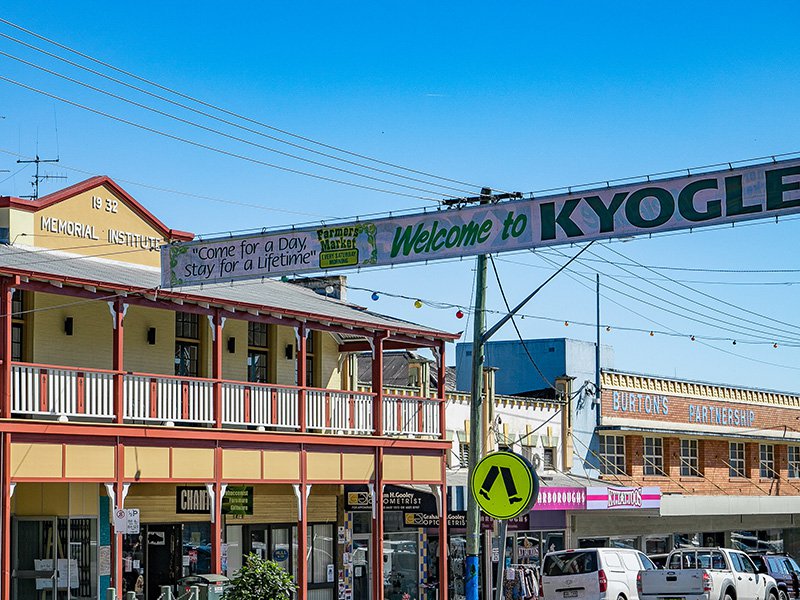Kyogle
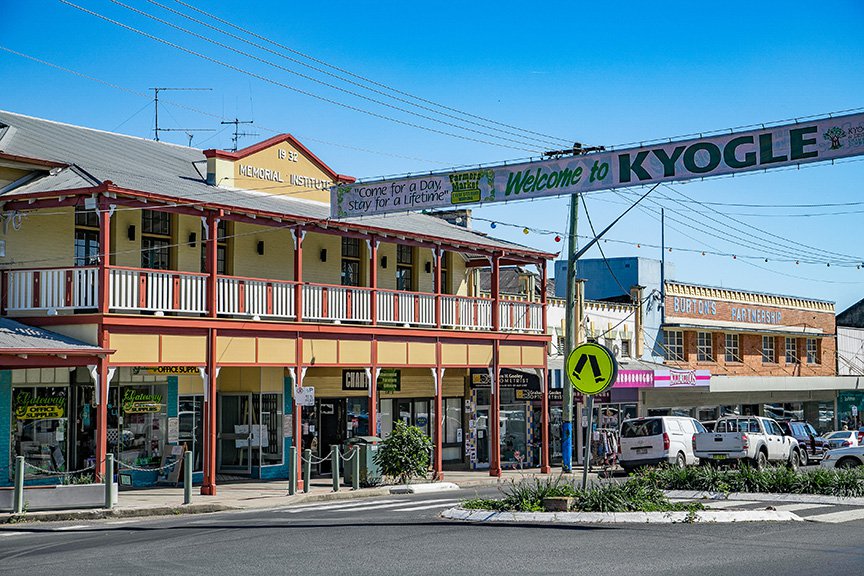
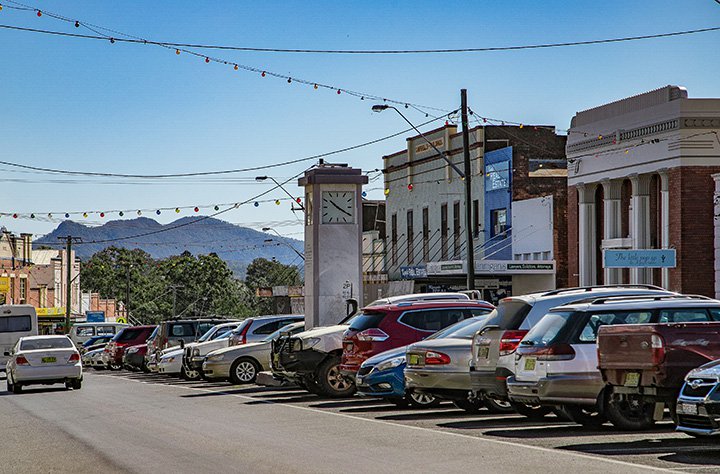
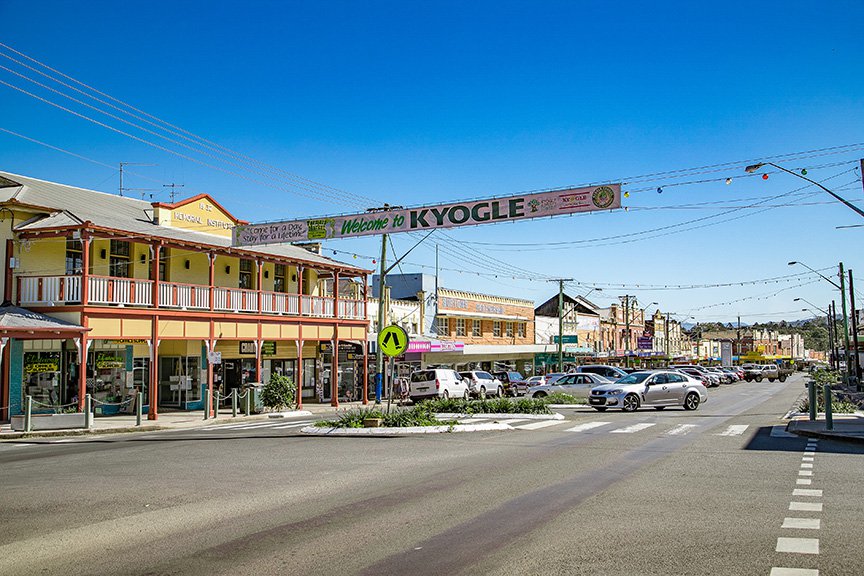
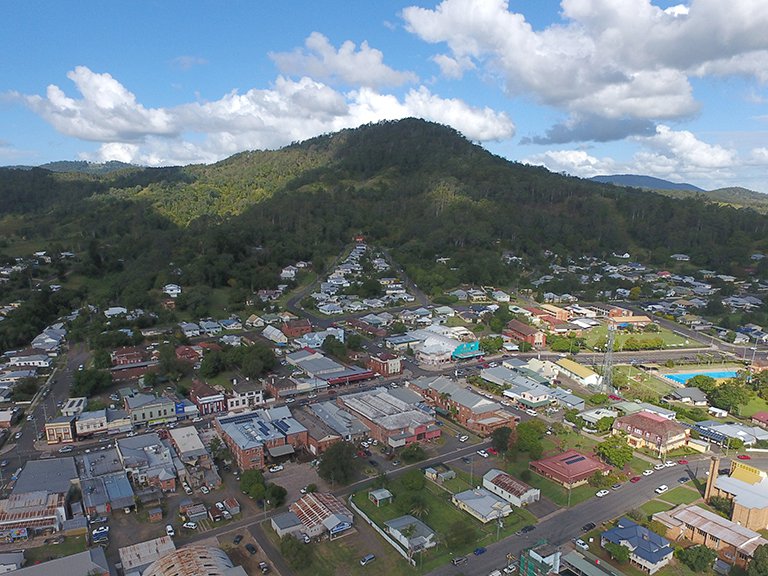
Culturally and environmentally diverse, the area centred on Kyogle is an ideal destination for those looking for the perfect country town and 'tree-change' lifestyle, and the motto 'Come for a Day, Stay for a Lifetime' rings true for many people who have come to call Kyogle home.
Kyogle brings together the environment, culture and village life where the original country charm of the Northern Rivers still exists. It is a slice of authentic rural Australia surrounded by World Heritage National Parks within Australia’s Green Cauldron. Kyogle is adapted from the Bundjalung word ‘kaiou-gal’ meaning ‘egg of the bush turkey or bustard’ or “native companion” which is a fast long-legged running bird. Kyogle Council area is 3,589 square kilometres of lifestyle with the Kyogle Township having the largest population around 3,000. Visitors love their experience of Kyogle and the surrounding villages drawn by the spectacular natural beauty of the area that flows with the essence of the authentic Australian rural character. With so much to offer it is no wonder that the Kyogle area is becoming recognised as the gem of the Northern Rivers of New South Wales.
Kyogle and villages offer unique shopping experiences. Cultural retail showcases the creative arts and the opportunity to purchase one of a kind collectables, antiques and items of old world charm housed in beautiful Art Deco buildings. Markets are popular in Kyogle and Villages with two permanent ones, the Kyogle Farmers Markets every Saturday from 8am – 12pm and Kyogle Bazaar Markets on the 4th Sunday of each month.
Information from visitkyogle.com.au
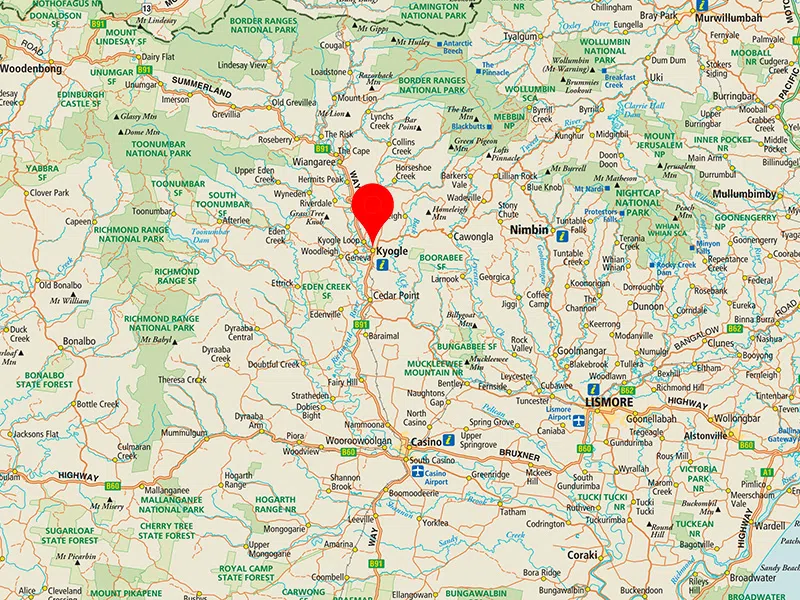
Some History about Kyogle
Much of this history is indeed a chant, a song of slow change documented only by the rocks, the trees and the legends of the first Aborigines. So wrote an early historian of Kyogle. The area of Kyogle, a name derived from Kaiou gal (the place of the plain turkey), was settled by the Bundjalung people, whose territory was wide and who had adapted to the environment over countless generations. Their exact numbers are uncertain, but the estimates of white settlers in the early 19th century placed the indigenous population of the present Kyogle area at up to 600.
Natural foods were abundant and physically the Bundjalung were impressive. “They were muscular, sinewy and of good athletic build”, according to one authority. At one with their surroundings, they had an extensive body of legends and culture heroes to explain their origins and the natural features of their region. European discovery of the region took place in the late 1820s, but it was not until the early 1840s that white settlement began with some enthusiasm. By 1843 seven stations had leased the entire Upper Richmond, including the area around Kyogle, then known as Fairymount.
Timber getters made serious inroads into the region’s resources from the 1860s. Stands of red cedar, which had attracted them at first, were all but stripped bare by the 1890s. An economic downturn in 1893 resulted in a fall in the value of the timber and vast quantities of the cut logs were abandoned Hoop pine was the next forest resource to be vigorously exploited. The Free Selection Bill introduced by the NSW government in the 1860s resulted in the subdivision of the large stations into farm selections. Before long there were 551 farms in the district, the great majority of them dairy farms. An organised dairying industry began with the building of a creamery and, in 1905, Kyogle’s first butter factory.
The name Kyogle appeared on official maps for the first tie. In the same year a census recorded a population of 51. Ten years later the population had increased to 1226 and the Kyogle district had become the North Coast’s most rapidly growing community. Advances in transport and infrastructure, spurred by the demands of dairy farmers for better market access for their products, included the construction of roads and bridges. In 1910 the railway came to Kyogle, providing a greater boost for the district’s commercial potential.
Private transport was also changing. A vehicle described as a “horseless buggy” made a local appearance in 1900. The citizens of Kyogle saw their first motor car in 1915, although cars remained something of a novelty for many years. A highlight of local transportation history was the construction of a high level bridge over the Richmond River, to overcome many of the problems caused by the lack of all-weather roads. “With stars in their eyes but unable to see the future, the dreamers, the planners, envisaged communication links extending to the Tablelands and the western slopes of the New England Ranges”, wrote a local historian.
Construction of the bridge involved the efforts of about 100 men, the unskilled working for one shilling an hour, during what was fortunately a relatively dry year with below average rainfall. Indeed, conditions towards the year’s end became intolerably hot, contributing to an outbreak of violence immediately outside the Exchange Hotel. In the incident the publican was stabbed by a disgruntled labourer who later received a two year sentence in Bathurst jail. The bridge itself opened without incident in early 1912.
Kyogle’s fortunes as a centre for the timber and pastoral industries were maintained during the period between the two world wars. Widespread social and economic changes during the post-war decades, however, had their impact on this region. The earlier symbols of rural wealth, butter factories and timber mills, gradually closed as the reasons for their existence dwindled.
In 1950, when dairying was said to be at its peak, more than 520 dairies were functioning in the Kyogle district. By the late 1970s only 118 remained. Today there are fewer still. Despite this decline, dairying and timber products are still regarded as the economic mainstays. For today’s visitor, Kyogle’s appeal is in its superb valley setting, its charming nearby villages and its proximity to the rainforests and national parks. At least two of the parks should be mentioned here. Richmond Range National Park, 40 km west of Kyogle, contains a remnant of the vast Focal Peak volcano, active about 24 million years ago. About 40 per cent of the park is covered by subtropical and dry rainforest, and more than 400 species of plants may be found. The park’s mammal fauna are said to be the most diverse of any comparably sized area in Australia, and include spotted tailed quolls and squirrel gliders. Bird species number more than 100. The World Heritage listed Border Ranges Park, shared by NSW and Queensland, has its southern entrance at Barkers Vale, some 25 km from Kyogle.
The park contains several picnic areas, lookouts and camping sites. The 60 km drive from entry to exit takes a leisurely 4-5 hours, allowing for a number of stops along the route. Visitors should not miss the opportunity to spend some time here.
Information from kyogle.nsw.gov.au
Kyogle Real Estate
The PRD Northern Rivers team has been actively selling homes and rural properties in Kyogle, Wiangaree, Grevillia, Woodenbong and Cawongla. If you are looking to buy in Kyogle, or would like to know what your property in Kyogle is worth. Contact us via the form below.
